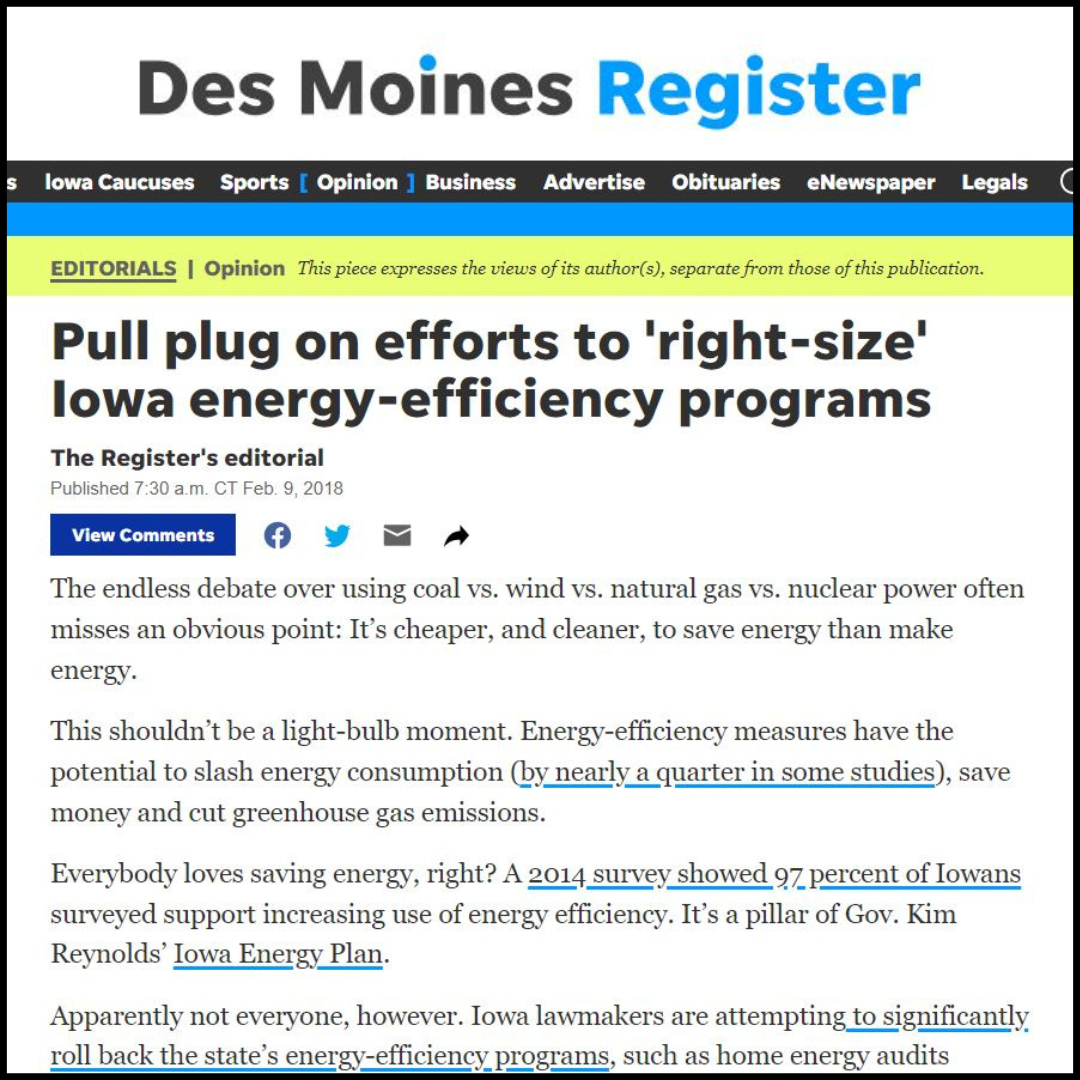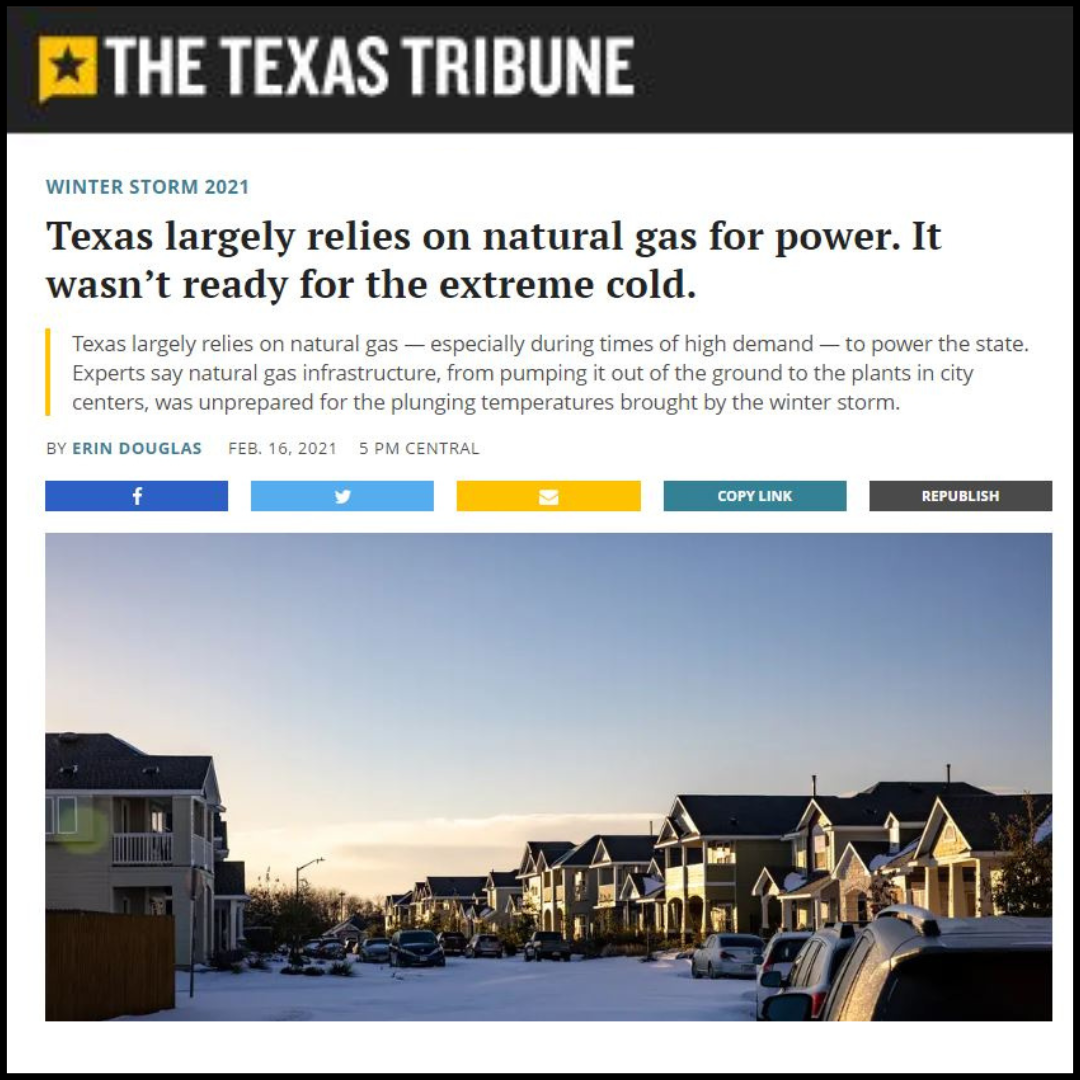What the state's ratemaking study can deliver for Iowa ratepayers
posted
by Kerri Johannsen on Tuesday, August 15, 2023
Despite major transformations in the electricity sector, Iowa has not reformed its laws and regulations governing the sector in more than 20 years. HF 577, the 2001 legislation that established advance ratemaking – we’ll cover this more later – delivered a sea change in how utilities were regulated and enabled the rapid expansion of wind energy in Iowa. This created a massive opportunity for our state, landing Iowa in the number one spot nationally for percent of electricity supplied by wind and infusing tens of millions of dollars in lease payments and local taxes into our state’s economy. But times have changed.
In 2023, the Iowa legislature adopted HF 617, which requires the Iowa Utilities Board (IUB) to undertake a review of utility ratemaking laws in Iowa and to recommend changes at the start of the 2024 legislative session. The law calls for the analysis to focus on “ensuring safe, adequate, reliable, and affordable utility services provided at rates that are nondiscriminatory, just, reasonable, and based on the utility’s cost of providing service to its customers within Iowa.” The IUB has hired consulting firm London Economics to convene stakeholders and perform the required analysis in Docket No. NOI-2023-0001.
IEC and many of our partners are engaged in bringing important perspectives to this docket. We want to see the continued growth of renewable energy in Iowa, but in a way that protects Iowa customers from unnecessary rate hikes, ensures continued reliability of electricity service, and includes Iowans as part of the solution.
Our Coalition’s Key Priorities in the Utility Ratemaking Study
Integrated Resource Planning
In Iowa, our electric utilities are monopolies – that means you don’t have a choice of provider. This might make sense when it comes to sharing big infrastructure like power lines, but it also requires transparency and careful regulation to balance the interests of the utility (making money for shareholders) and customers (reliable electricity at reasonable prices). Most states with our kind of regulatory system, like Missouri, North Carolina, and Minnesota, require utilities to get approval for the type of generation they are going to build by going through a long-term planning process. Transparent planning that is reviewed and approved by a regulator ensures utilities can meet future energy needs in a safe, reliable, and cost-effective way.
The process established in Iowa in 2001 allows MidAmerican and Alliant to seek pre-approval to add generation, without a full assessment of how it fits into the rest of the generation fleet. Because this process only requires that new projects be “reasonable,” it has let MidAmerican and Alliant build and build – without having to show that their decisions are good for customers in the long-run or that they are the best deal on a cost basis.
IEC wholeheartedly supports renewable energy in Iowa, especially because we know it is the least-cost option for ratepayers even while it reduces pollution of all kinds. When it comes to monopoly utilities that serve Iowans, those companies must be held to account when they are continuing to run expensive, old fossil fuel plants at customer expense, prioritizing their own profits over the customers who have no choice in electricity provider. Otherwise, Iowans pay the price while shareholders rack up profits.
An Energy Efficiency Revival
 In 2018, Iowa’s investor-owned utilities backed efforts to drastically roll back Iowa’s nation-leading energy efficiency programs. These programs provided Iowans with energy audits and rebates on efficient lighting, heating and cooling systems, and water heaters, as well as home insulation. How much energy your home or business uses shows up every month on your bill. That money goes from your pocket into the pockets of the utilities and their investors. Being efficient also means you don’t have to build as many power plants, which saves money for everyone regardless of whether they use the programs.
In 2018, Iowa’s investor-owned utilities backed efforts to drastically roll back Iowa’s nation-leading energy efficiency programs. These programs provided Iowans with energy audits and rebates on efficient lighting, heating and cooling systems, and water heaters, as well as home insulation. How much energy your home or business uses shows up every month on your bill. That money goes from your pocket into the pockets of the utilities and their investors. Being efficient also means you don’t have to build as many power plants, which saves money for everyone regardless of whether they use the programs.
Legislative action in 2018 dropped Iowa from 19th in the nation for efficiency in 2017 to 35th in 2022. This is a huge hit to Iowa customers and a missed opportunity. We will be advocating for innovative approaches to revive energy efficiency as a key part of keeping rates low in Iowa and benefiting customers, not just the utilities.
Technology and Cost are Driving the Transition to Renewables
The cost of wind energy dropped by 63% between 2009 and 2023 and utility-scale solar by 83%. Battery storage prices have dropped over 70% since 2015, and when coupled with wind or solar is already cost competitive with coal while the race is on to improve technology, reduce costs, and scale long-duration batteries.
In 2023, 99% of all coal plants in the U.S. were more expensive just to operate compared to building new wind and solar. Repeated analyses of Iowa’s coal fleet, including an analysis by Synapse Energy Economics, have shown that this is true of the plants here as well. Simple economics show it’s time for renewables to rule and coal to go.
.png) Manufacturing, businesses, and homes are increasingly “smart” and linked through the internet. This change, coupled with electrification of vehicles, cooking, and heating creates additional opportunities to balance our energy system not just by making more electricity, but also by using less through cutting back energy use strategically and even sending stored energy from vehicle batteries back to the electric grid particularly at key moments of high demand on the hottest and coldest days.
Manufacturing, businesses, and homes are increasingly “smart” and linked through the internet. This change, coupled with electrification of vehicles, cooking, and heating creates additional opportunities to balance our energy system not just by making more electricity, but also by using less through cutting back energy use strategically and even sending stored energy from vehicle batteries back to the electric grid particularly at key moments of high demand on the hottest and coldest days.
Environment Drives Necessity
 Our current system of burning fossil fuels to create electricity has the ironic compounding effect of making our electricity increasingly less reliable. Record-breaking destructive storms, droughts, and unprecedented freezes and heat waves have revealed the inability of these traditional fossil resources to keep pace and keep us safe. We can escape this downward spiral.
Our current system of burning fossil fuels to create electricity has the ironic compounding effect of making our electricity increasingly less reliable. Record-breaking destructive storms, droughts, and unprecedented freezes and heat waves have revealed the inability of these traditional fossil resources to keep pace and keep us safe. We can escape this downward spiral.
The ratemaking study process will begin with filings on August 23, followed by a series of three discussion sessions being called 'charrettes' that will each span two days, with filings scattered around these discussions as well.
There could not be a more important moment for Iowa advocates, utilities, and policymakers to be having this discussion. For us, it represents a moment of hope to restore balance between the utilities and Iowans. This means pushing for comprehensive planning that will bring down costs for Iowa customers while speeding our transition to clean energy. It means reinvesting in the cheapest option of all – energy efficiency – which keeps rates low for everyone and reduces pollution.
We are excited to hear the innovative ideas that others will bring to the discussion and we will be there through the whole process, keeping you up to date as we prepare for the legislature to pick up this discussion in January.
- coal
- energy efficiency
- iowa legislature
- renewable energy
- transmission